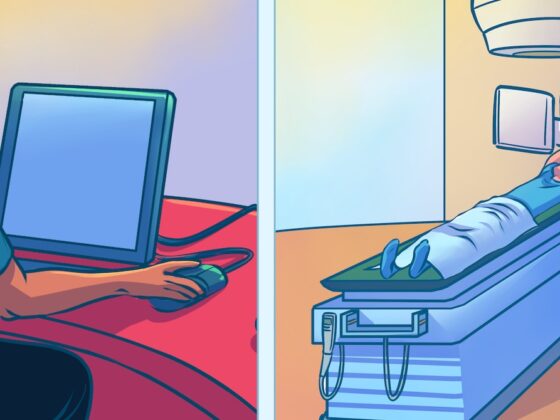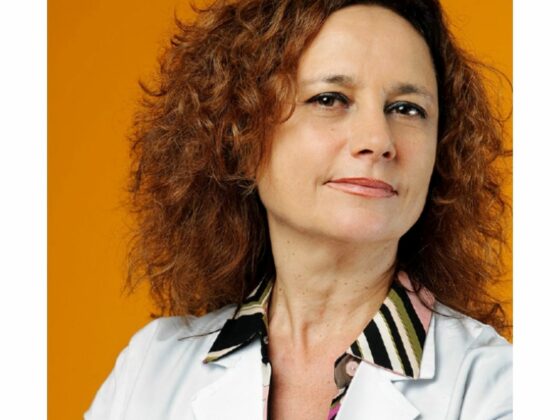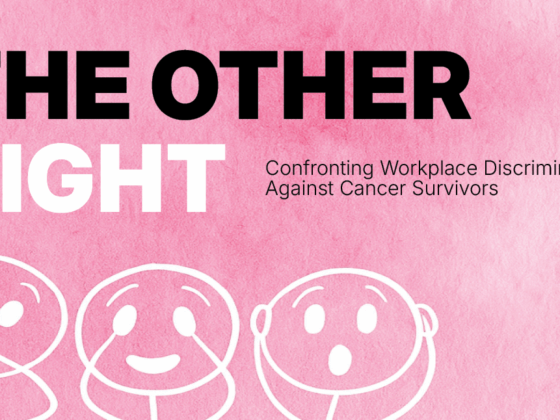Pragmatic adjustments to trial protocols were seen to be essential during the Covid-19 pandemic to avoid trials being abandoned or delayed. Most changes involved reducing the requirements for travelling to centralised trials centres and reducing the level of reporting requirements. These measures were agreed between trial sponsors, regulators, contract research organisations (CROs) and trial centres as acceptable compromises in the face of unforeseen and unprecedented circumstances. And many clinicians and patients found the reduced demands for travel and reporting made their lives a lot easier.
The changes were made to reduce the risk to patients of exposure to the Covid-19 and minimise opportunities to spread the virus. However, the question now arises: could embracing these changes as standard practice help expand the number of cancer clinical trials and the rate of enrolment, by reducing the burden on trials centres and patients, without compromising the safety of patients or the credibility of the trial results?
In a viewpoint piece published in JAMA Oncology in August, under the title ‘Rethinking Clinical Trials Reform During the COVID-19 Pandemic’, three US-based authors argue that they could, and they make the case for grabbing the opportunity offered by the pandemic to take a critical look at how clinical trials are conducted.
They argue that, despite only one in 10 adult cancer patients being enrolled in clinical trials across the USA, steady reductions in cancer death rates since the early 1990s have saved almost 3 million people from dying early from cancer. “One can only imagine the magnitude of benefit that patients would experience if we improve and accelerate clinical trial enrolment,” they say.
They propose six areas where reforms could be made. These cover greater use of telemedicine and virtual platforms, greater use of local laboratories, reduction in the administrative burden, the relative emphasis placed on progression-free survival (PFS) endpoints and patient reported outcomes (PROs), and validation in a real world setting of changes to the way clinical trials are conducted.
Cancer World asked three European cancer trialists and two leading cancer patient advocates what they thought about the changes argued for in the JAMA Oncology article:
Point 1: Greater use of telemedicine and virtual platforms
Pre-Covid: Clinical trials were often only available at academic medical centres and frequently required face-to-face visits, which sometimes presented barriers to participation owing to patient out-of-pocket expenses, and the need to travel long distances to centres.
Proposed changes: The introduction of virtual platforms would limit in-person visits only to those that are necessary, and hopefully lead to increased participation in clinical trials. The COVID-19 pandemic has led to the widespread adoption of telemedicine and virtual visits to minimise the risk of to patients of unnecessary exposure.
![]() Udai Banerji thinks use of telemedicine and virtual platforms would be impractical for many aspects of phase 1 trials, but might work for phase 2/3 trials. “In phase 1 trials, where drugs are being used in humans for the first time, risks are very high. For dose-limiting toxicity evaluations, the patients need to come to the academic medical centre for regular clinical examinations, blood tests, ECGs and other investigations, such as CT scans,” he says. In the case of patients responding to the trial medication and who are on study for extended periods of time, telemedicine may be appropriate to reduce the number of visits if the patient is on study for longer than 4‒6 months. But because only around 50 patients are enrolled in phase 1 trials (versus 400‒800 in phase 2 and 3 trials), Banerji feels that only academic medical centres have the capacity to accommodate intensive monitoring.
Although online questionnaires could be used to evaluate toxicity, he has reservations. “In-face-to-face meetings, healthcare professionals get subtle cues from the patient’s facial expressions,” says Banerji, who conceded that such issues might be tackled by using video links.
Udai Banerji thinks use of telemedicine and virtual platforms would be impractical for many aspects of phase 1 trials, but might work for phase 2/3 trials. “In phase 1 trials, where drugs are being used in humans for the first time, risks are very high. For dose-limiting toxicity evaluations, the patients need to come to the academic medical centre for regular clinical examinations, blood tests, ECGs and other investigations, such as CT scans,” he says. In the case of patients responding to the trial medication and who are on study for extended periods of time, telemedicine may be appropriate to reduce the number of visits if the patient is on study for longer than 4‒6 months. But because only around 50 patients are enrolled in phase 1 trials (versus 400‒800 in phase 2 and 3 trials), Banerji feels that only academic medical centres have the capacity to accommodate intensive monitoring.
Although online questionnaires could be used to evaluate toxicity, he has reservations. “In-face-to-face meetings, healthcare professionals get subtle cues from the patient’s facial expressions,” says Banerji, who conceded that such issues might be tackled by using video links.
![]() Jan Geissler agrees that direct contact with the treating physician should remain a top priority. “There’s a danger less intensive interactions could lead to toxicity, side effects and quality of life issues going undetected. Such matters are often only discovered by direct observations through face-to-face discussions. At the same time, there’s no value in spending hours in transit or the waiting room to have a 10-minute appointment with a clinician. So we need to take the best of both – virtual and face-to-face – whatever is most appropriate.”
Adherence to virtual visits, Geissler reflects, might prove an issue. “It’s much easier for patients to forget about virtual meetings than physical meetings. So we need to develop new approaches to ensure consultations take place.”
Bettina Ryll welcomes telemedicine as a way to reduce the considerable burden clinical trial participation places on patients. She quotes the pre-Covid example of a friend who recorded spending 800 hours over the course of a year participating in a clinical trial. “Such commitments have all too often led to patients declining to participate in clinical trials,” she says.
Jan Geissler agrees that direct contact with the treating physician should remain a top priority. “There’s a danger less intensive interactions could lead to toxicity, side effects and quality of life issues going undetected. Such matters are often only discovered by direct observations through face-to-face discussions. At the same time, there’s no value in spending hours in transit or the waiting room to have a 10-minute appointment with a clinician. So we need to take the best of both – virtual and face-to-face – whatever is most appropriate.”
Adherence to virtual visits, Geissler reflects, might prove an issue. “It’s much easier for patients to forget about virtual meetings than physical meetings. So we need to develop new approaches to ensure consultations take place.”
Bettina Ryll welcomes telemedicine as a way to reduce the considerable burden clinical trial participation places on patients. She quotes the pre-Covid example of a friend who recorded spending 800 hours over the course of a year participating in a clinical trial. “Such commitments have all too often led to patients declining to participate in clinical trials,” she says.
Point 2: Use of local laboratories
Pre-Covid: Many centres did not allow laboratory studies or procedures to be performed outside of centres where the trial was being conducted, even if patients lived far away and facilities were available locally for laboratory studies or procedures.
Proposed changes: The pandemic has resulted in some sponsors and regulatory bodies being more flexible and agreeing to tests being performed locally and less frequently. The JAMA Viewpoint says there is no reason why routine and basic tests should not be performed at locations convenient to patients, provided no special expertise is needed.
![]() A limitation, says Banerji, is that many specialist tests used in cancer trials (for example, testing specific drug markers) can only be performed in tertiary centres where laboratory staff have specific accreditation and training. “But there’s no reason why straightforward measures, like full blood counts and standard biochemistry, shouldn’t be done locally,” he says.
An issue for toxicity monitoring is the turnaround time. Banerji explains that tertiary centres turn around liver and kidney function tests in less than a day, whereas, in the UK, it can take five to seven days for GP-ordered test results to come through. “Such delays could be detrimental for patients on trial medication, but might not matter so much for long term follow-up once patients have completed treatment,” he says. Jaap Verweij argues that test turn-around times may differ between European countries. “In the Netherlands, liver- and kidney-function tests ordered by GPs are usually available the same day,” he says.
The option of having patient samples posted or couriered to tertiary centres is already in play, says Banerji, at least as far as Covid screening is concerned. “We’re already using this approach for Covid testing before admitting patients on to our wards. We post out the testing-kit, the patient takes the sample and posts it back to us, and if negative we admit them,” he says.
Verweij adds, “If we focus on trying to capture only truly clinically relevant changes, we can easily make use of routine and basic tests performed at locations convenient to the patient, and at the same time decrease the number of those tests.”
A limitation, says Banerji, is that many specialist tests used in cancer trials (for example, testing specific drug markers) can only be performed in tertiary centres where laboratory staff have specific accreditation and training. “But there’s no reason why straightforward measures, like full blood counts and standard biochemistry, shouldn’t be done locally,” he says.
An issue for toxicity monitoring is the turnaround time. Banerji explains that tertiary centres turn around liver and kidney function tests in less than a day, whereas, in the UK, it can take five to seven days for GP-ordered test results to come through. “Such delays could be detrimental for patients on trial medication, but might not matter so much for long term follow-up once patients have completed treatment,” he says. Jaap Verweij argues that test turn-around times may differ between European countries. “In the Netherlands, liver- and kidney-function tests ordered by GPs are usually available the same day,” he says.
The option of having patient samples posted or couriered to tertiary centres is already in play, says Banerji, at least as far as Covid screening is concerned. “We’re already using this approach for Covid testing before admitting patients on to our wards. We post out the testing-kit, the patient takes the sample and posts it back to us, and if negative we admit them,” he says.
Verweij adds, “If we focus on trying to capture only truly clinically relevant changes, we can easily make use of routine and basic tests performed at locations convenient to the patient, and at the same time decrease the number of those tests.”
![]() Geissler, who is a CML patient living in Germany, says as a favour his GP takes the regular blood samples that the specialist centre, located 400 kilometres away, needs to monitor his response to treatment. “For this approach to become a widespread, we would need to consider how to reimburse GPs to ensure that they’re willing to cooperate,” he says.
Geissler, who is a CML patient living in Germany, says as a favour his GP takes the regular blood samples that the specialist centre, located 400 kilometres away, needs to monitor his response to treatment. “For this approach to become a widespread, we would need to consider how to reimburse GPs to ensure that they’re willing to cooperate,” he says.
Point 3: Reduction of administrative burden
Pre-Covid: The burden of administrative tasks required by Contract Research Organisations (CROs) from investigators limited the number of patients who could be enrolled into studies and the capacity of investigators to open additional study sites.
Proposed changes: Owing to research site restrictions during the pandemic, CROs were forced to be on site less frequently, and use remote monitoring to ensure quality of collected data. Additionally, some organisations relaxed the need for timely data entry and protocol deviations. Clinical trials exploring vaccines or anti-Covid-19 therapies started recruitment in record times. This process could be applied to cancer trials, especially those recruiting critically ill patients.
![]() The regulatory monitoring process, where the CRO, pharma company, or academic sponsor undertakes site visits to ensure the correct information has been entered into the trial data base, can be labour intensive, agrees Banerji. “Since the medical notes are now often online, the process could easily be performed remotely; however, there are significant information governance challenges. You would need to develop a new infrastructure to ensure unauthorised people cannot gain access to patient information. Remote monitoring can substantially reduce travel costs and increase speed of data verification, all of which make clinical trial administration more effective.’’
The regulatory monitoring process, where the CRO, pharma company, or academic sponsor undertakes site visits to ensure the correct information has been entered into the trial data base, can be labour intensive, agrees Banerji. “Since the medical notes are now often online, the process could easily be performed remotely; however, there are significant information governance challenges. You would need to develop a new infrastructure to ensure unauthorised people cannot gain access to patient information. Remote monitoring can substantially reduce travel costs and increase speed of data verification, all of which make clinical trial administration more effective.’’
![]() Geissler says, “We’re convinced the bureaucratic burden of trials has reduced the speed and intensity of research while not increasing patient safety. We welcome the fact Covid-19 necessities are leading to assessment of which rules and regulations are really critical to ensure quality safety and outcomes of clinical trials.”
But Ryll cautions about the dangers of cutting corners. “Overall, reporting and quality control are an important part of clinical trials since these experiments are conducted on human beings. A recent review found that, in the rush to get things done, some Covid-19 trials failed to capture essential information, such as age,” she says.
Geissler says, “We’re convinced the bureaucratic burden of trials has reduced the speed and intensity of research while not increasing patient safety. We welcome the fact Covid-19 necessities are leading to assessment of which rules and regulations are really critical to ensure quality safety and outcomes of clinical trials.”
But Ryll cautions about the dangers of cutting corners. “Overall, reporting and quality control are an important part of clinical trials since these experiments are conducted on human beings. A recent review found that, in the rush to get things done, some Covid-19 trials failed to capture essential information, such as age,” she says.
Point 4: Reduced emphasis on PFS as an endpoint
Pre-Covid: Driven by the use of progression-free survival (PFS) as the primary endpoint, most clinical trials required frequent imaging studies for assessment of disease status.
Proposed-changes: In the era of Covid-19, even for patients receiving antineoplastic therapies, imaging studies have been delayed. Emerging guidance from the FDA suggests tumour assessments (when appropriate) may be delayed for ongoing trials. Decreasing the frequency of imaging has the advantage of exposing patients to less radiation and iodine contrast, and generating cost savings. However, PFS as an endpoint is heavily dependent on frequent imaging assessments. A way forward, suggest the authors, is to increase the time between imaging studies so that fewer studies are undertaken over the course of the trial, and to use overall survival as the primary endpoint.
![]() Verweij comments, “For a long time clinical investigators have argued we shouldn’t be looking for the statistical significance of micro-improvements, but rather for clinically relevant improvements. I believe introducing longer periods between imaging would positively contribute to this.”
Judith Bliss adds, “Overall survival may not be relevant or achievable in metastatic disease, where several subsequent lines of therapy would be envisaged. Here PFS is more useful and, if imaging proves impractical, PFS could be considered more broadly in terms of time to starting next therapy or palliative care referrals. Where a radiological component is mandatory, it might be possible to consider relaxing some of the RECIST requirements, for example removing the need for confirmatory scans.”
Verweij comments, “For a long time clinical investigators have argued we shouldn’t be looking for the statistical significance of micro-improvements, but rather for clinically relevant improvements. I believe introducing longer periods between imaging would positively contribute to this.”
Judith Bliss adds, “Overall survival may not be relevant or achievable in metastatic disease, where several subsequent lines of therapy would be envisaged. Here PFS is more useful and, if imaging proves impractical, PFS could be considered more broadly in terms of time to starting next therapy or palliative care referrals. Where a radiological component is mandatory, it might be possible to consider relaxing some of the RECIST requirements, for example removing the need for confirmatory scans.”
![]() Geissler says, “PFS has always been an important endpoint for patients, as no one wants to be treated until death with a drug, which is what overall survival data requires. If assessments are the issue, we need to find a mechanism to undertake imaging locally rather than just returning to overall survival because we can’t adapt our logistics.”
Ryll adds, “The endpoint of PFS isn’t some ‘nice-to-have’, but actually represents the clinically actionable time point: it’s at disease progression you switch the patient to alternative treatments, and not missing this time point is critical for outcomes.”
Geissler says, “PFS has always been an important endpoint for patients, as no one wants to be treated until death with a drug, which is what overall survival data requires. If assessments are the issue, we need to find a mechanism to undertake imaging locally rather than just returning to overall survival because we can’t adapt our logistics.”
Ryll adds, “The endpoint of PFS isn’t some ‘nice-to-have’, but actually represents the clinically actionable time point: it’s at disease progression you switch the patient to alternative treatments, and not missing this time point is critical for outcomes.”
Point 5: Increased use of patient reported outcomes
Pre-Covid: Imaging studies were used to make decisions on whether to continue or discontinue individual patients on treatment regimens.
Proposed changes: In the absence of frequent imaging studies, oncologists have redefined ‘clinical stability’ in terms of how the patient feels. In addition to using efficacy, the JAMA Oncology article proposes that investigators should continue to add patient-reported outcomes (PROs) as another endpoint in future studies. This, they argue, is because these measures have inherent value to patients.
![]() Bliss comments, “So far the focus of PROs has been on quality of life, well-being, symptoms and side effects. Patient self-reports of disease-related events represents a separate strand of work. There’s still much work to be done about how patients feel about self-reporting these outcomes.”
Verweij, adds, “While I agree PROs should be further developed, we don’t know yet if there’s any correspondence between them and imaging results. Also, it’s unlikely they’d be acceptable endpoints for regulatory agencies approving new treatments.”
Bliss comments, “So far the focus of PROs has been on quality of life, well-being, symptoms and side effects. Patient self-reports of disease-related events represents a separate strand of work. There’s still much work to be done about how patients feel about self-reporting these outcomes.”
Verweij, adds, “While I agree PROs should be further developed, we don’t know yet if there’s any correspondence between them and imaging results. Also, it’s unlikely they’d be acceptable endpoints for regulatory agencies approving new treatments.”
![]() Geissler says, “PROs should be an integral part of all studies, since treatments aren’t just about clinical effectiveness, but how patients feel and function in their daily lives. However, pharma often uses PRO measures that are outdated, not externally validated and not specific to the disease, its symptoms and expected side effects.”
He mentions a recent initiative, Setting International Standards in Analysing Patient-Reported Outcomes and Quality of Life Endpoints Data (SISAQOL) which is currently looking to determine more consistent and comparable quality of life results for cancer clinical trials.
Ryll adds, “It isn’t the reporting of PROs that provides value to patients, but ensuring that meaningful action is taken to help the patient. This aspect is all too often missed in clinical trials.”
Geissler says, “PROs should be an integral part of all studies, since treatments aren’t just about clinical effectiveness, but how patients feel and function in their daily lives. However, pharma often uses PRO measures that are outdated, not externally validated and not specific to the disease, its symptoms and expected side effects.”
He mentions a recent initiative, Setting International Standards in Analysing Patient-Reported Outcomes and Quality of Life Endpoints Data (SISAQOL) which is currently looking to determine more consistent and comparable quality of life results for cancer clinical trials.
Ryll adds, “It isn’t the reporting of PROs that provides value to patients, but ensuring that meaningful action is taken to help the patient. This aspect is all too often missed in clinical trials.”
Point 6: Real world evidence studies to test whether Covid trial changes are beneficial
Finally, the JAMA Viewpoint points out that the pandemic offers a great opportunity to use real world evidence to ‘pragmatically’ test whether changes to clinical trials implemented during the pandemic proved detrimental or helpful to patient care. The authors cite the example of the Covid-19 and Cancer Consortium (CCC-19), which aims to collect and analyse observational data at scale (through crowd sourcing) to inform clinical practice in real time.
![]() Geissler says, “I agree proper evidence needs to be collected to inform planning of future trials and clinical practice. Without this we won’t be able to prove whether the changes worked or not and there’s a real danger we’ll just snap back into the way we did things pre-Covid.”
Ryll adds, “In combination with artificial intelligence and tight, closed feed-back loops, real world evidence offers the opportunity to considerably accelerate learning.”
Geissler says, “I agree proper evidence needs to be collected to inform planning of future trials and clinical practice. Without this we won’t be able to prove whether the changes worked or not and there’s a real danger we’ll just snap back into the way we did things pre-Covid.”
Ryll adds, “In combination with artificial intelligence and tight, closed feed-back loops, real world evidence offers the opportunity to considerably accelerate learning.”
Ilustration by Alessandra Superina












